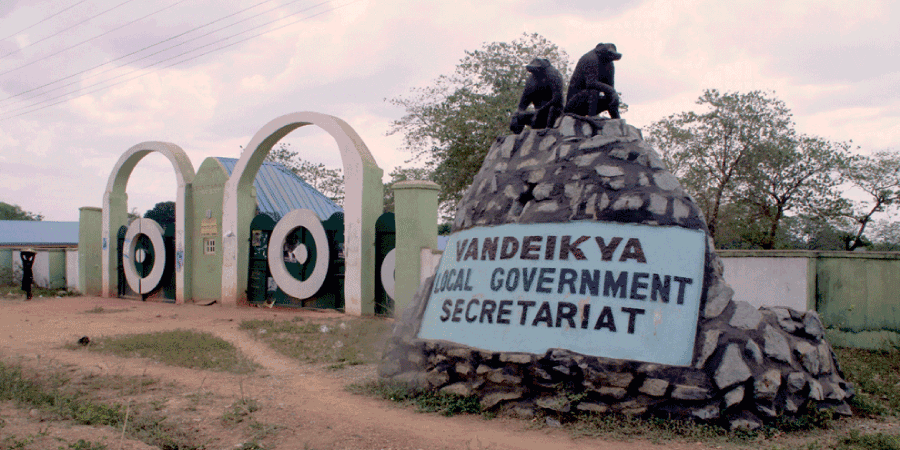
Vandeikya Local Government Area
Vandeikya local government was created on 28th August 1976 sequel to the National Local Government Reforms of 1976. Vandeikya local government was carved out of Gboko LGC.
The people:
Vandeikya local government people are the descendants of one great ancestor; Achira or Jechira. The second name of Jechira is Ikyor who had three sons. The brothers usually met on top of the rock across Aya River in Vandeikya to discuss matters of common interest. The common venue is known as Vandeikya or the rock settlement of baboons or monkeys as is evident on the logo of the local government.
The name ‘Vandeikya town’ derives its name from this rock settlement of baboons or monkeys where monkeys are/were always seen playing.
Landmass:
The local government has a landmass of 183,939/68 square metres
Council wards:
- Mbagbam council ward
- Mbadede council ward
- Mbagbera council ward
- Mbajor council ward
- Mbayongo council ward
- Mbakaange council ward
- Nyimangbah council ward
- Ningev council ward
- Mbatyough council ward
- Tsambe council ward
- Mbakyahacouncil ward, and
- Vandeikya township council ward
Having 23o polling units across the 12 council wards or districts, Vandeikya local government has Kyan and Tiev state constituencies.
Population:
Over 532,881 (1999 census projection)
Shares boundaries:
Vandeikya local government area is located in the South Eastern part of Benue State, sharing boundaries with:
- Obudu and Ogaja local government councils in Cross River State.
- Konshisha, Kwande and Ushongo local governments in Benue State.
Location:
South Eastern, Benue State.
Agricultural produce:
Rice, sweet potatoes, sorghum, citrus, cassava, bananas, spices, tomatoes, pepper of various types, palm oil and palm products.
Also:
The Vandeikya local government has wide Fadama area and good arable land for sheep and cattle rearing. Already, the Federal government has established sheep grazing area in Ningev Council Ward of Vandeikya Local Government.
Industrial potentials:
The Local government council is endowed with industrial potentials such as starch and glucose production, fruit juice extraction, vegetable oil, bottling of palm wine and solid minerals (zinc), barite, kaolin, rutile, etc.
Weather:
The local government experiences:
- A short dry season (November – March), and
- Long wet season (April – October) which represent low and high rainfall respectively.
Investors coming to Vandeikya local government can therefore establish industries without fear of shortage of raw materials.
Infrastructural facilities:
These include the Trunk ‘A’ federal highway that links Cross-River State through Ogoja to Katsina-Ala and other parts of the North like Taraba, Adamawa, Yobe and Borno States.
Others include: Tse-Mker, Ihugh and Gboko, Tse Agberagba and Ankar, Vandeikya and Obudu in Cross River States respectively.
Electricity:
Electricity supply from the national grid spearheaded by communal efforts extends to Vandeikya township, Chi village and Tsar.
Hospitals:
Also in place is a modern general hospital, missionary hospital, and local government clinics spread all over the pipeline.
Water supply:
Through the state water supply program, Vandeikya local government now enjoys pipe-borne water.
Rivers:
- River Aya, and
- River Be
Markets:
Primary or major market:
- Ihugh, and
- Agbo
Secondary markets include:
- Tsar,
- Koti-Yough, and
- Gbem.
Other markets that supplement the revenue potentials of the major markets are:
Dagba, Betse, Agidi Mbakena, Anhyla, Agu, Sambo, Pev, Taatihi, Adeiyongo, Tor Tiv, Mede, Anongo and Ugba markets.
These sources generate substantial internal revenue for the local government.
